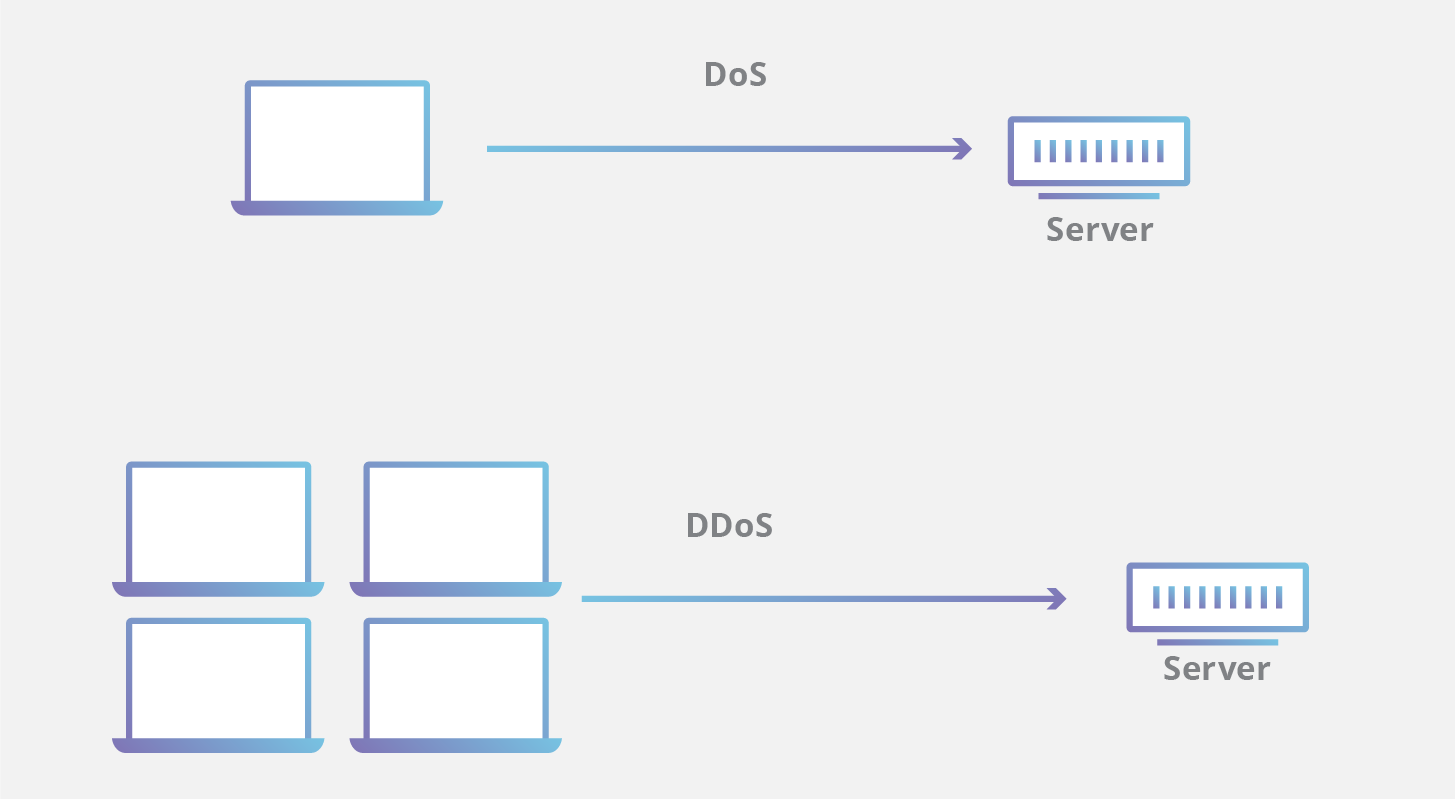DENIAL OF SERVICE
There are two general methods of DoS attacks: flooding services or crashing services.
Flood attacks occur when the system receives too much traffic for the server to buffer, causing them to slow down and eventually stop. Popular flood attacks include:
An additional type of DoS attack is the Distributed Denial of Service (DDoS) attack.

A DDoS attack occurs when multiple systems orchestrate a synchronized DoS attack to a single target. The essential difference is that instead of being attacked from one location, the target is attacked from many locations at once.
The distribution of hosts that defines a DDoS provide the attacker multiple advantages:
Countermeasure
Countermeasures for DoS and DDoS attacks are:
- 1. Intrusion Detection Systems (IDS) and an Intrusion Protection Systems (IPS).
- 2. Strong anti-virus and anti-spyware software on all systems with Internet connectivity.
- 3. File and folder hashes on system files and folders to identify if they have been compromised.
- 4. Reverse DNS lookup to verify the source address.
- 5. External firewalls with the following filters:
- - Ingress filters that specify any inbound frame must have a public IP address from outside of the organization's LAN.
- - Egress filters that specify any outbound frame must have a private IP address within the organization's LAN.
- - Address filter to prevent traffic from specific attackers (if known).
- 6. Once a DoS attack begins, you can minimize its effects by implementing filters to block unwanted traffic. You can also contact your ISP to implement filtering closer to the source and reduce the bandwidth used by the attack.
- 7. Hardening practices on all machines, especially publicly exposed servers and directory and resource servers.
Source :
: https://sites.google.com/a/pccare.vn/it/security-pages/dos-attacks-and-countermeasures
: https://www.cloudflare.com/learning/ddos/glossary/denial-of-service/